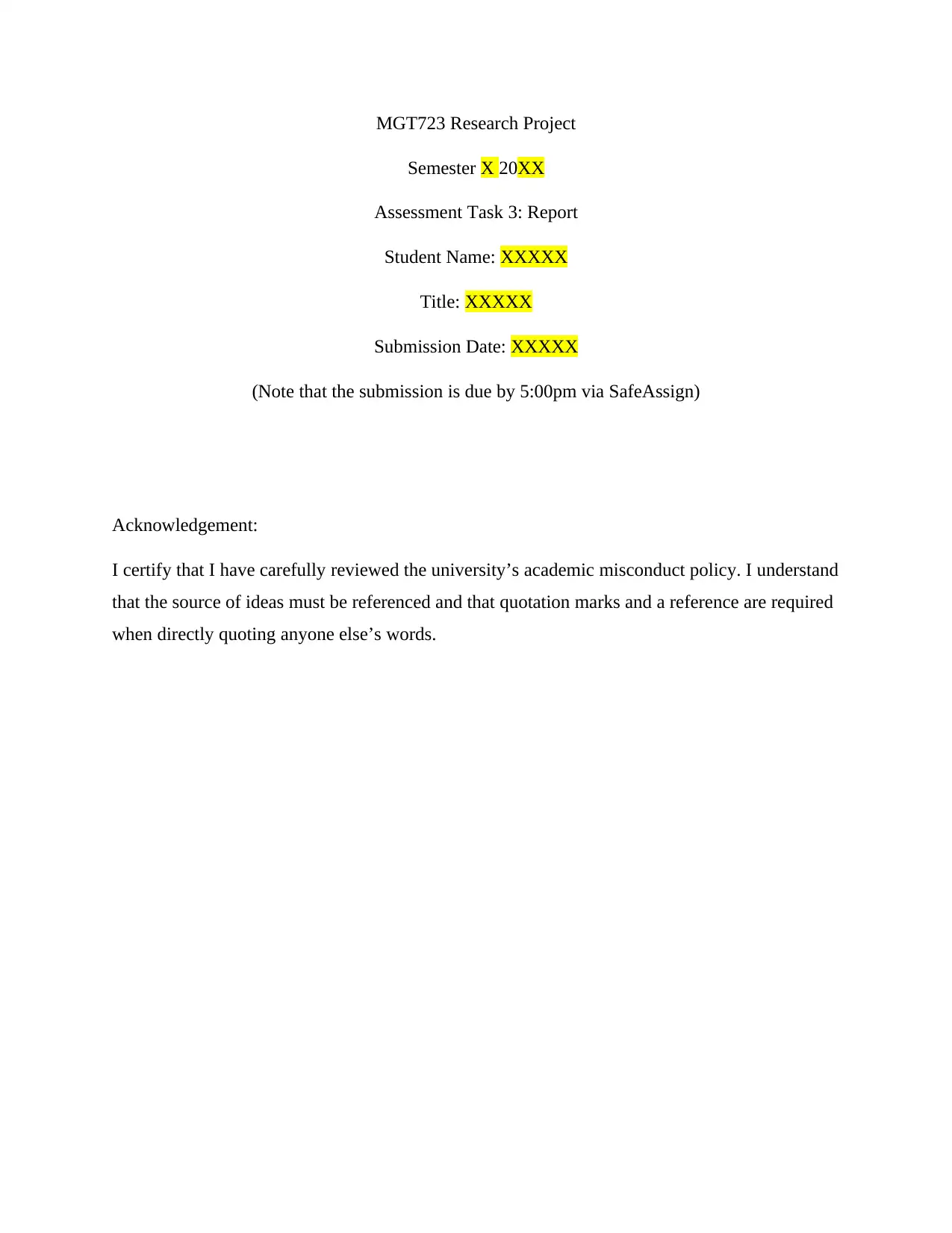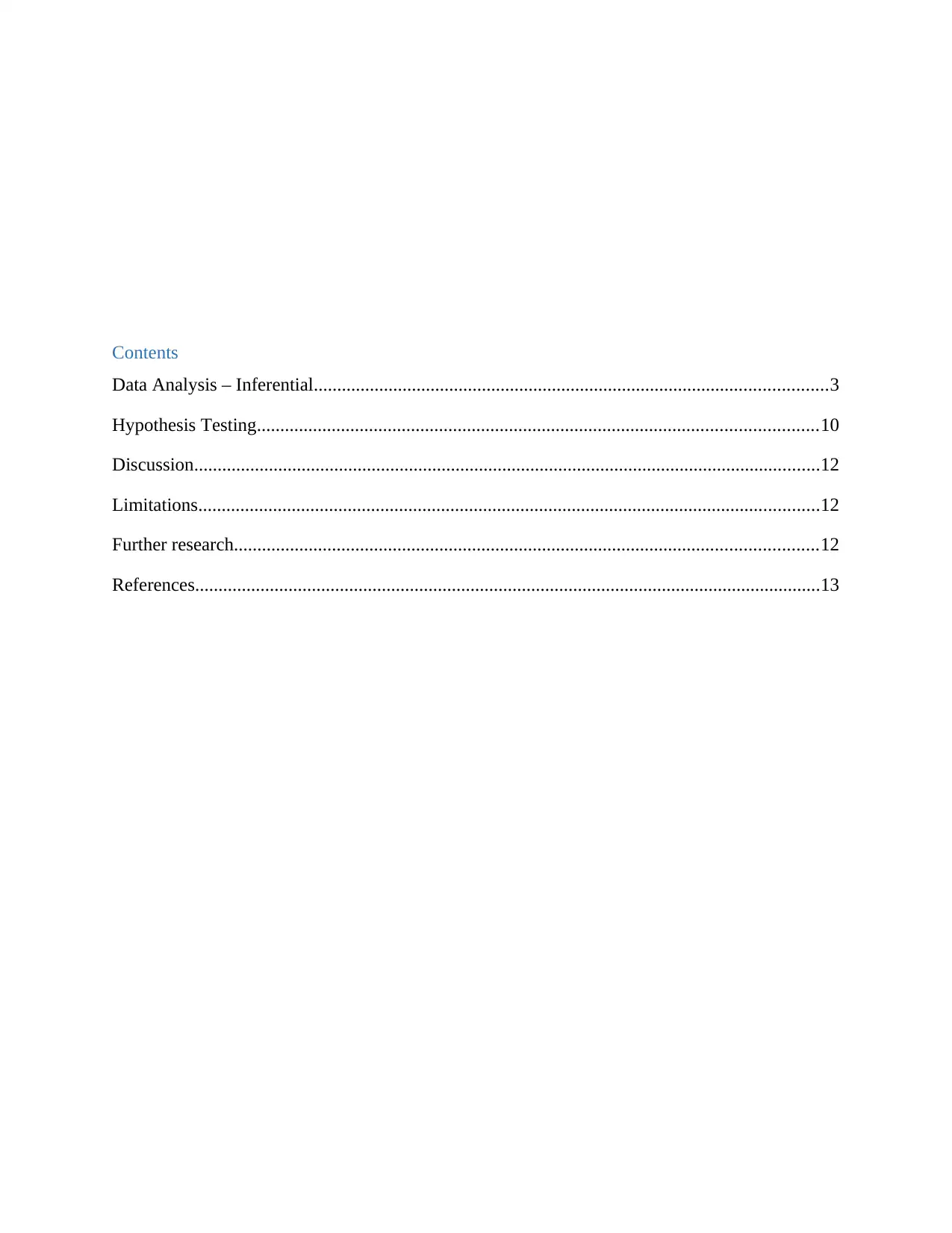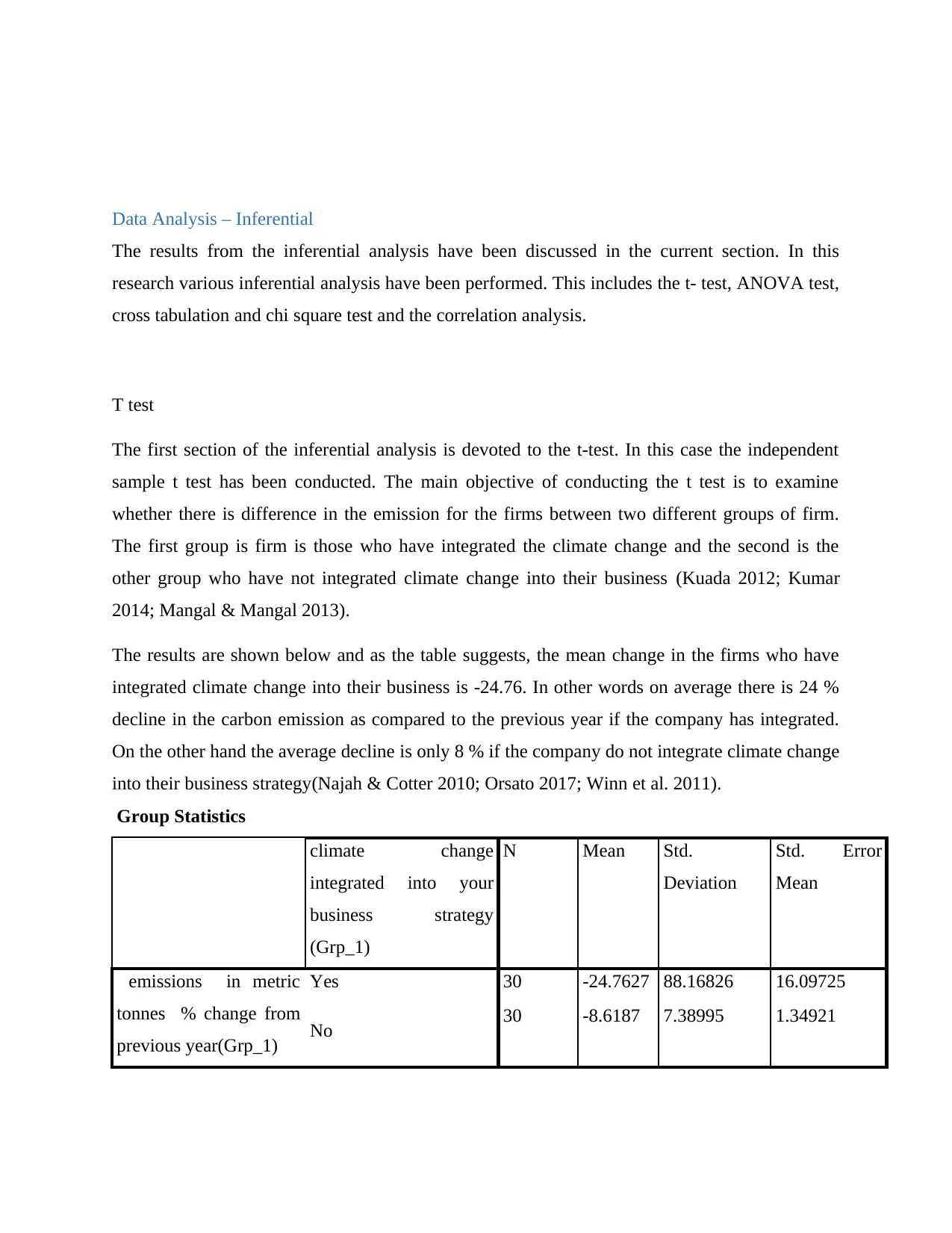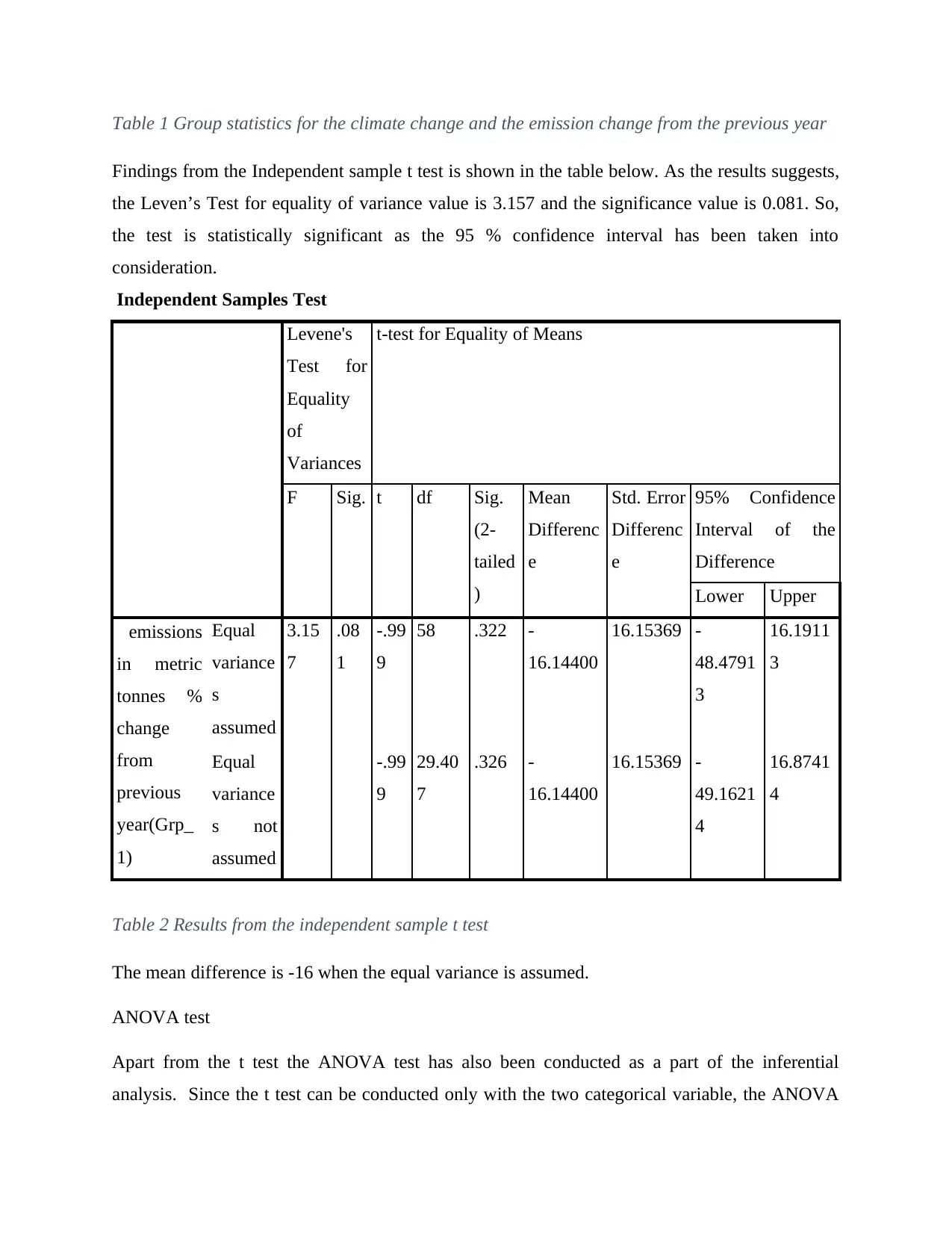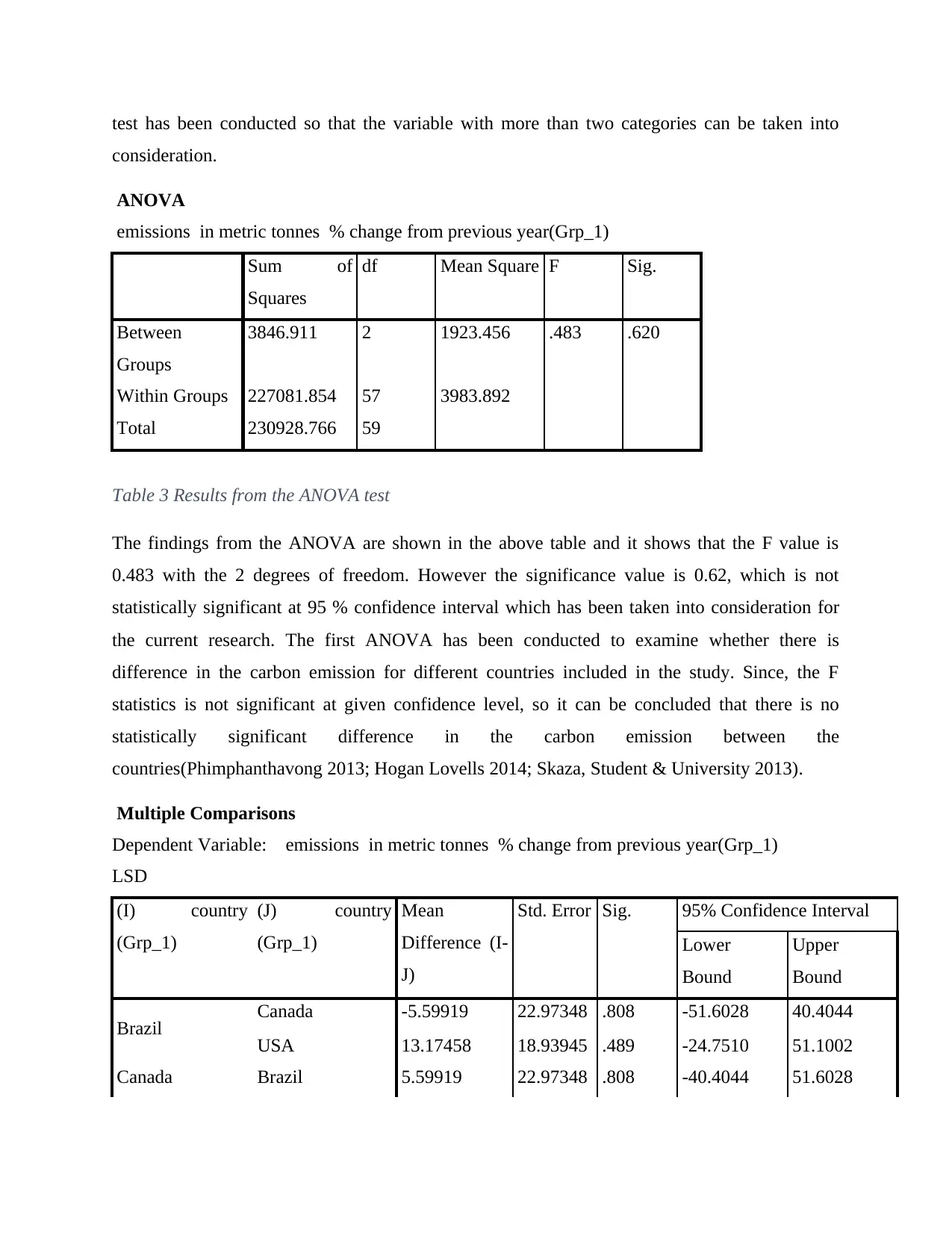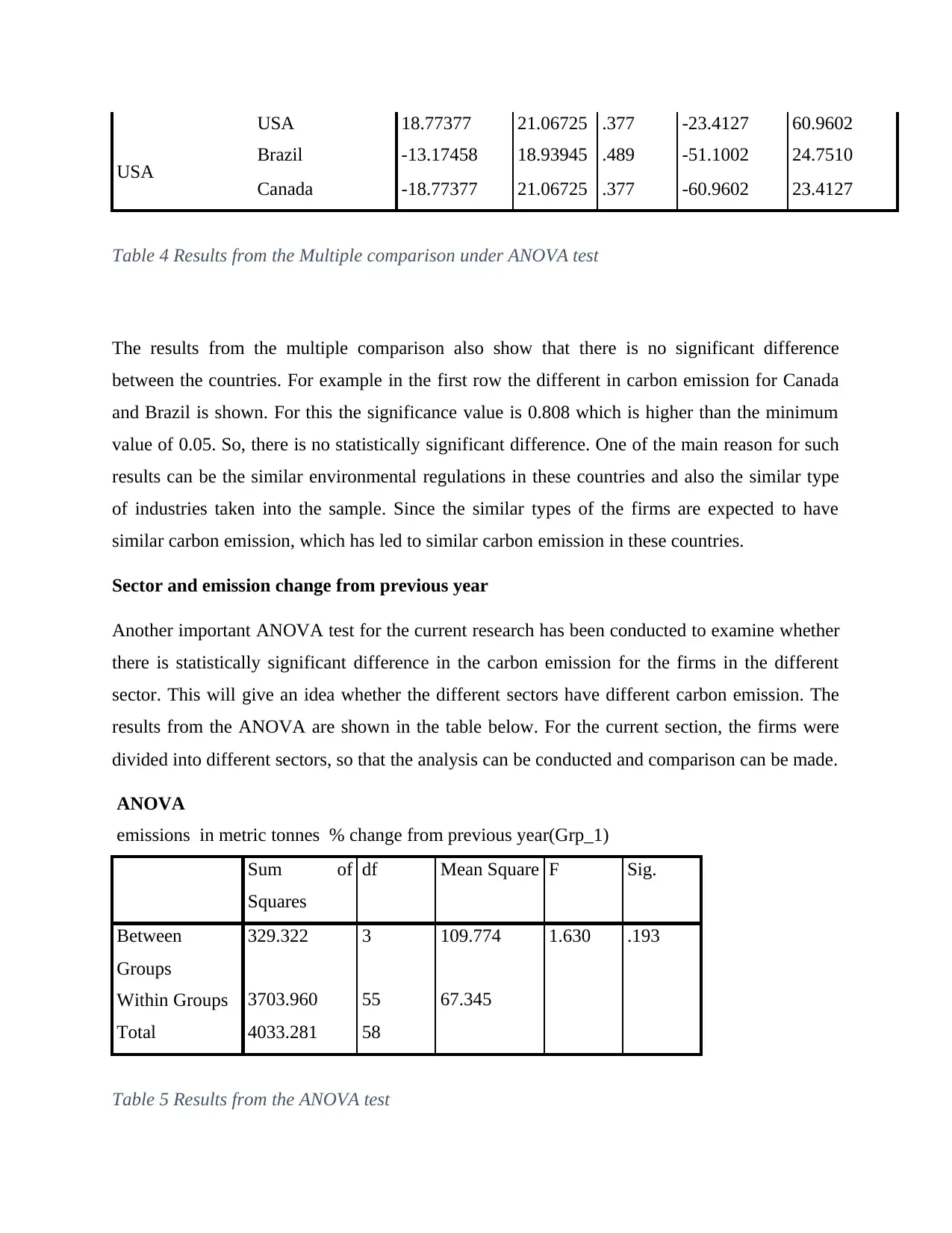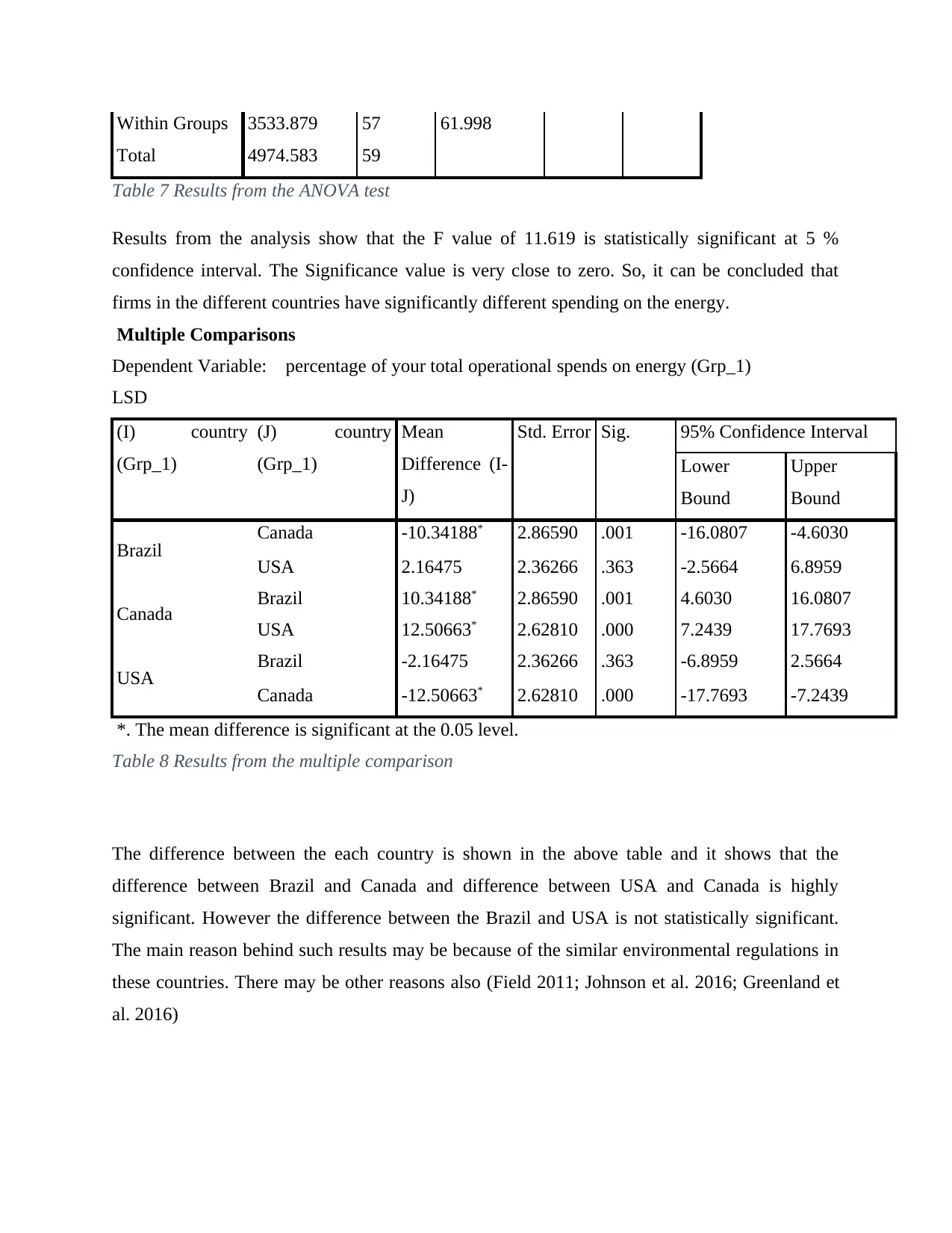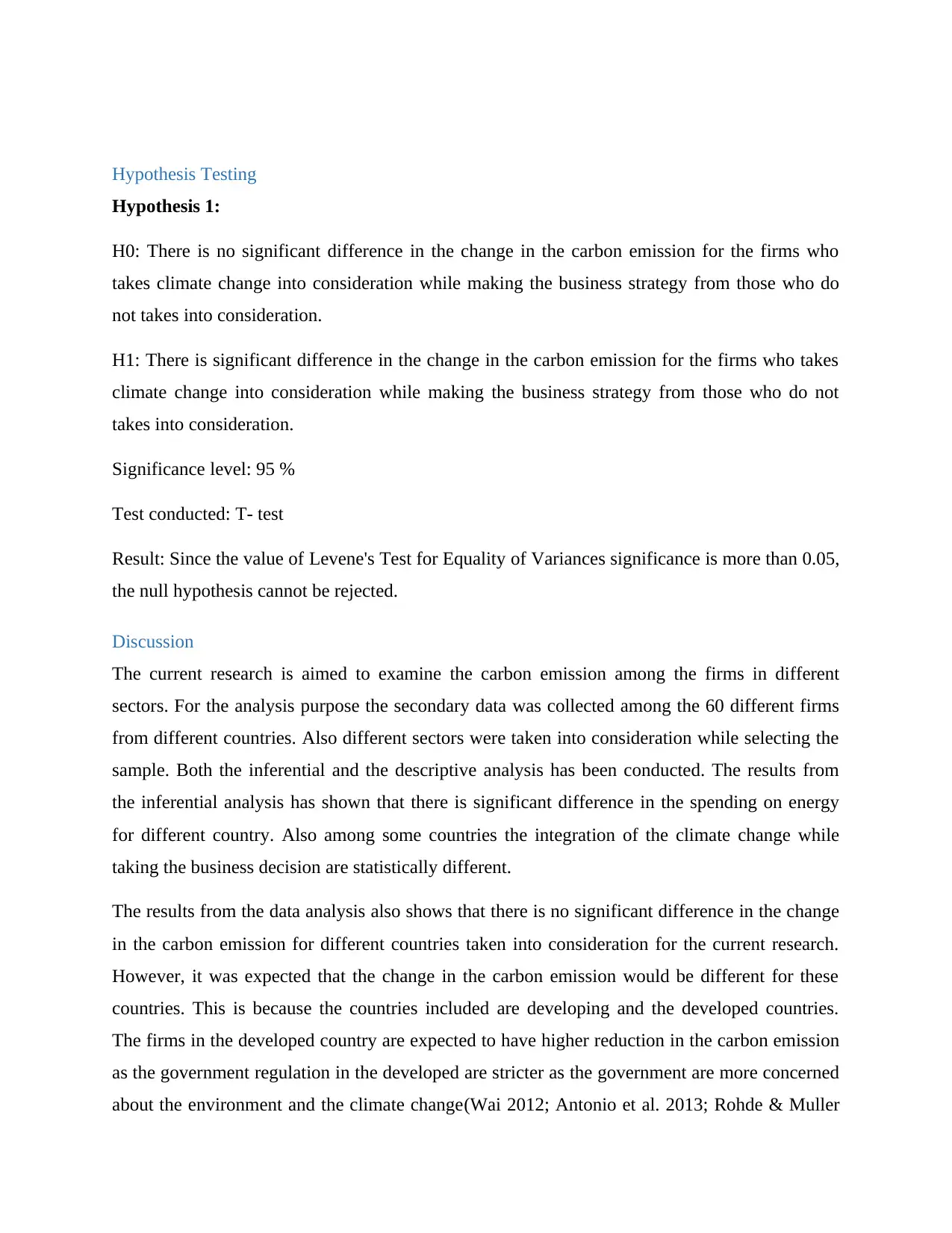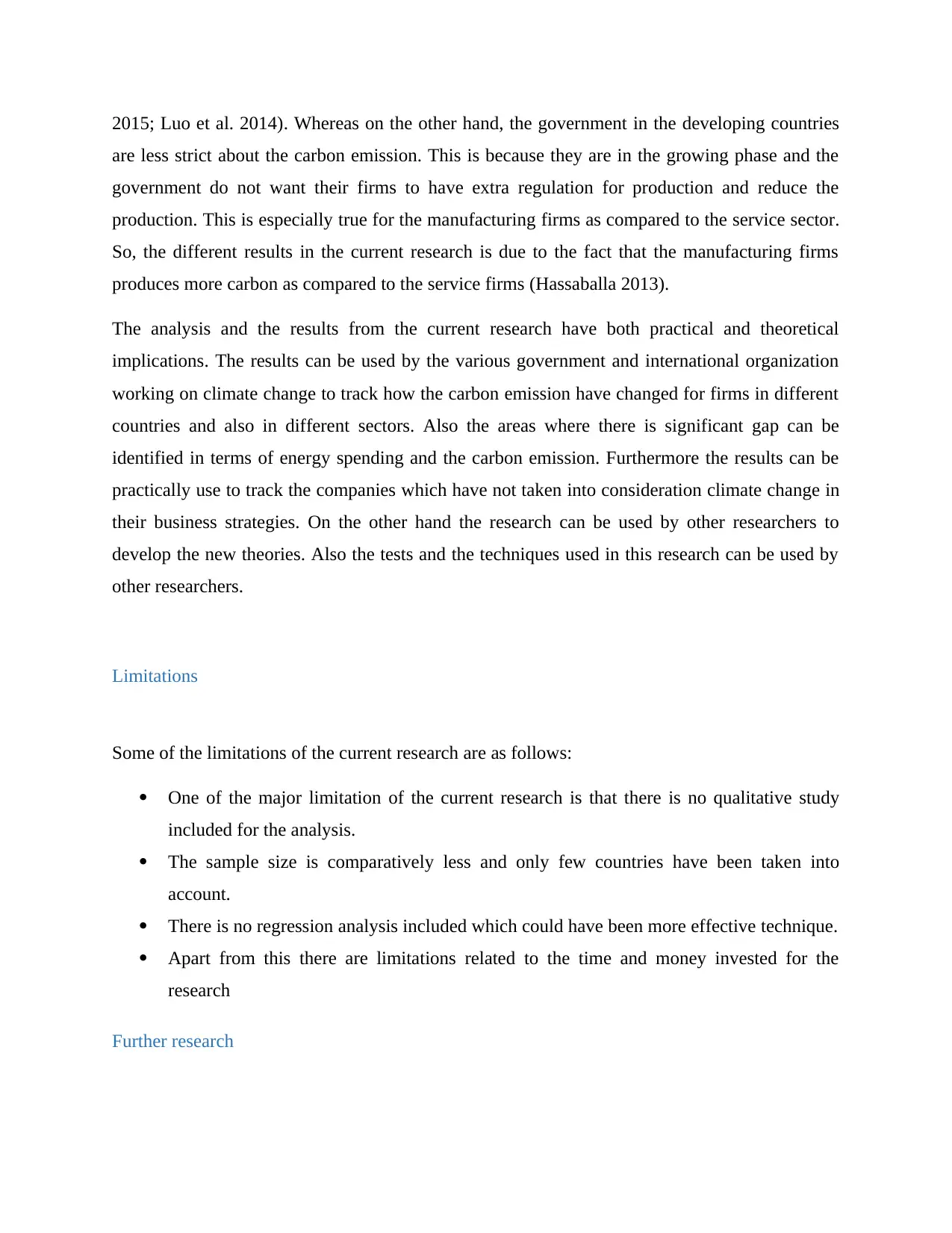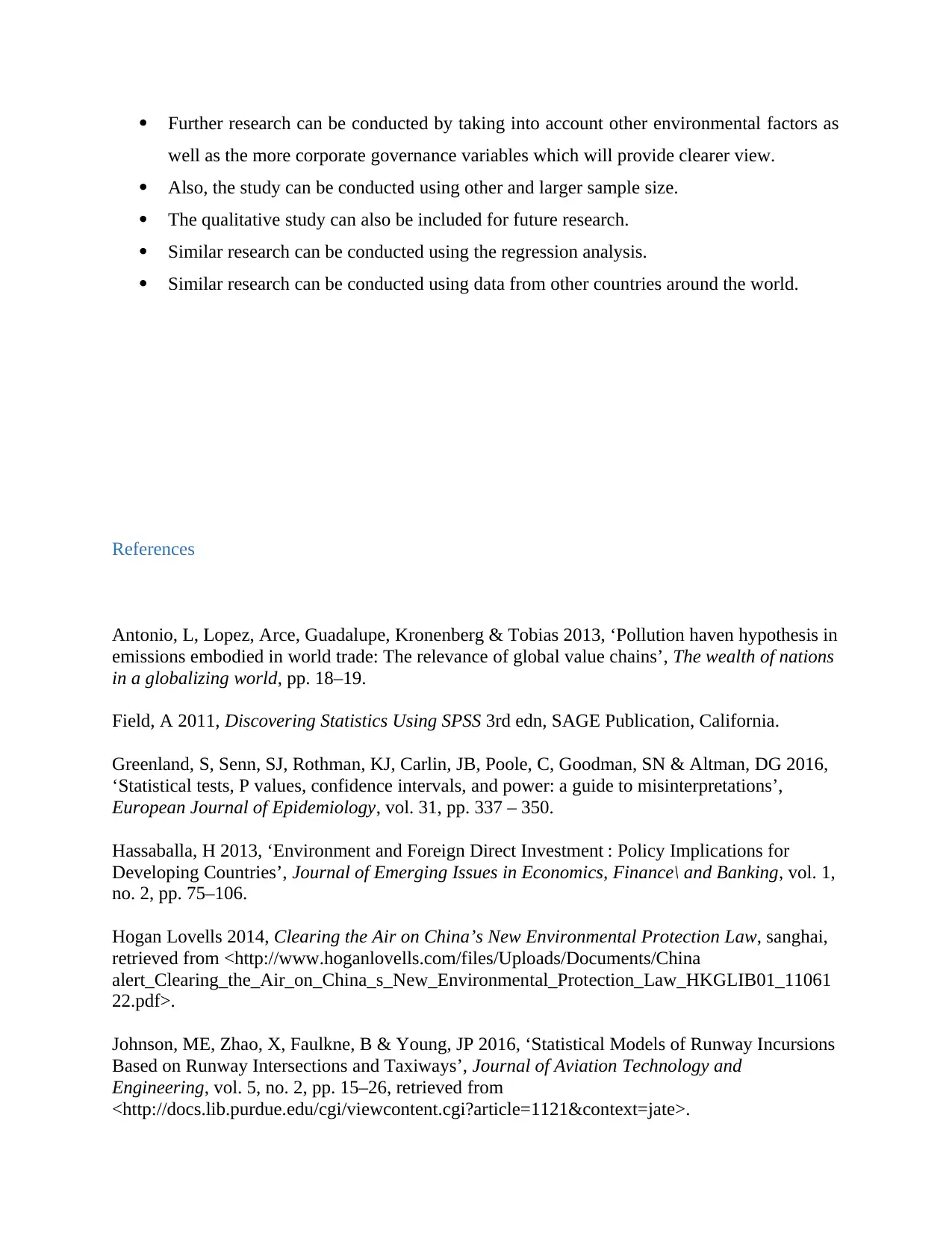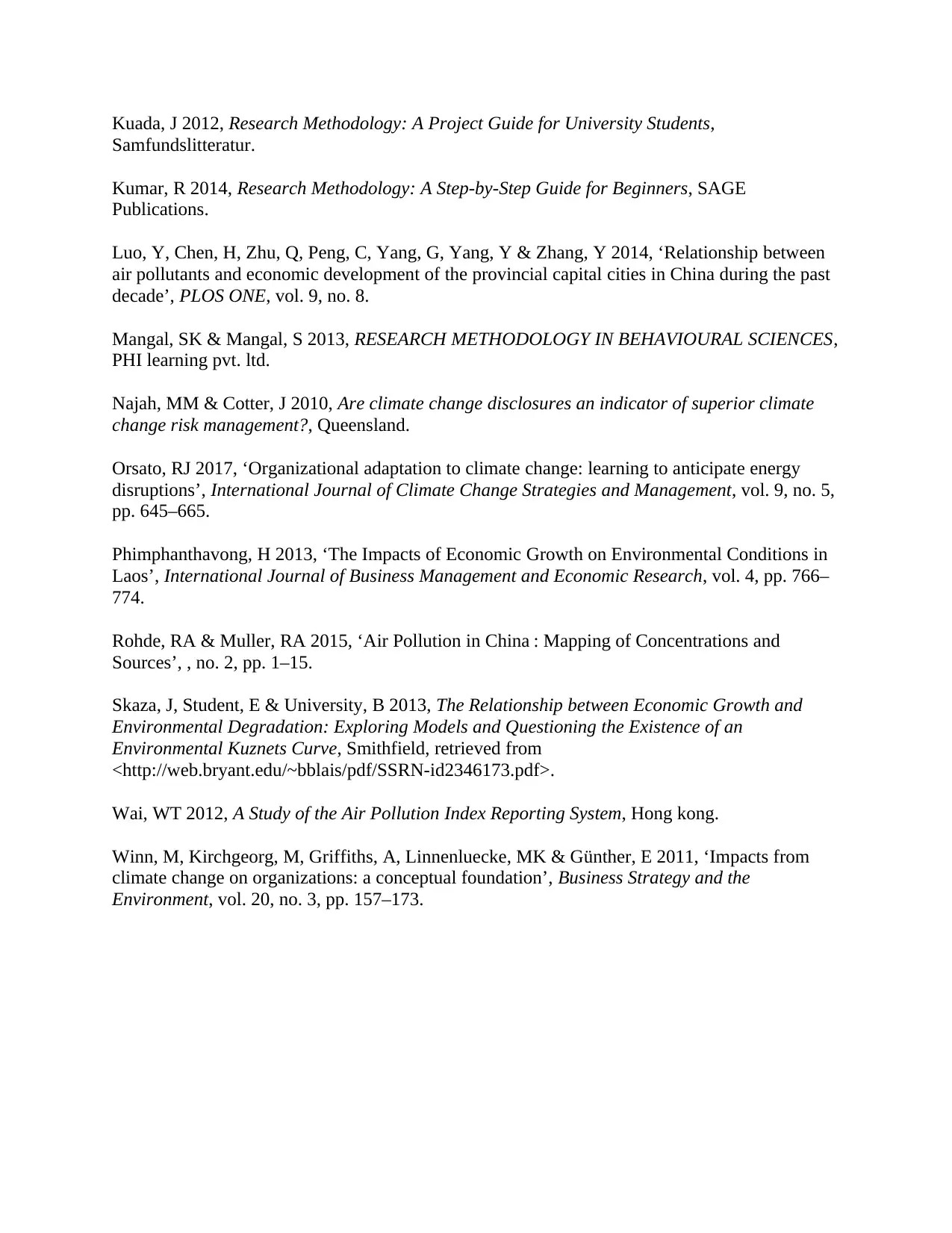This report presents the results of inferential analysis including t-test, ANOVA test, cross tabulation and chi square test, and hypothesis testing for carbon emission and climate change integration in business strategy. The findings suggest that firms who have integrated climate change into their business strategy have a significant decline in carbon emission as compared to those who have not. However, there is no significant difference in carbon emission between firms in different sectors. The spending on energy for firms in different countries is significantly different. Hypothesis testing has been conducted to examine the significant difference in the change in carbon emission for firms who take climate change into consideration while making the business strategy.
![[object Object]](/_next/static/media/star-bottom.7253800d.svg)
![[object Object]](/_next/static/media/star-bottom.7253800d.svg)
